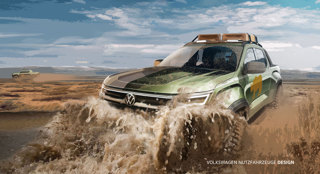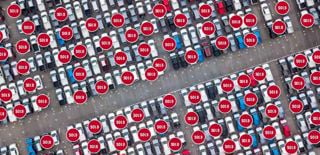After what he described as a "topsy turvey" year for automotive, EY UK & Ireland automotive leader, David Borland, suggests electric vehicles (EV) will hold the key to recovery in 2022.
Read his reflections on the challenges of the year past and his "pragmatic predictions" for the year ahead in his exclusive AM 'guest opinion' feature.
If 2020 was ‘Annus Horribilis’ for the auto sector, there was a sense of hope in the new year that the market would gradually improve once the challenges of Brexit had been successfully navigated and Lockdown 3.0 had passed.
However, 2021 turned out to be the sequel with a similar storyline to 2020, without a happy ending. The car industry continued to grapple with rising component prices, a shortage of semi-conductors, record levels of back orders for new cars with huge price increases for used cars.
Demand to supply led challenges
The subplot of the semiconductor shortage worsened in 2021 and had a crippling effect on new car sales. In part due to reduced orders through 2020 and other industries being prioritised over automotive customers across the supply chain, the impact on production and profits has been huge.
Manufacturers globally have attributed significant reductions in earnings to the shortage, with knock on effects across the supply chain. Significantly, this signalled a shift for the sector from a demand to supply led challenge.
Partnerships – the new normal
Manu Varghese, from EY’s UK & Ireland advanced manufacturing and mobility team noted that, in response, automotive manufacturers and suppliers are implementing strategic long-term partnerships to unlock value and combat supply chain headwinds.
OEMs announced partnerships with semi-conductor manufacturers to combat the shortage of chips, entered into joint research opportunities with technology firms and also promised to explore joint manufacturing opportunities with competitors and start-ups.
We also witnessed a convergence of sectors as tie ups with energy, infrastructure, and automotive companies were revealed. This trend is expected to continue into next year and will help improve new car supply in the medium to long term.
Component Pricing
Beyond the well-known issues related to the lack of availability of containers, congestion at ports and a shortage of HGV drivers, the car industry has also grappled with rising prices of components such as resin, glass and metals.
Steel prices saw historic highs during 2021, while aluminium prices have doubled since April 2020. Like the chip shortage, rising raw material prices are expected to continue in 2022.
Dealers innovate
While the market has remained challenging throughout the year, dealers have demonstrated their entrepreneurialism and innovative approach.
Click and collect, home delivery, and contact free sales were in their infancy when the pandemic first hit, but over the course of 2021 have been embraced and rolled out at pace by dealers and manufacturers alike – and they are likely to remain the norm as we move forwards in an omni channel world.
This innovation will continue to be tested as new sales models come to the fore in 2022, with the agency model already creating challenges in other markets as it is deployed.
EVs setting new records
The growth in electric vehicle sales (BEV & PHEV) continued to provide the proverbial silver lining for throughout 2021. In November, plug-in vehicle sales reached 28% share for the month. Not quite the 90% plus share in Norway, but clear demonstration the transition is accelerating.
This is largely due to vehicles coming to the market at pace from manufacturers, who are manging the balance of capital investment for new products versus penalties for non-compliance on emissions regulations.
Also supporting this are measures adopted by the government to promote EVs including consideration for mandatory car charge points in newly constructed houses, grants to support chargers at motorway services and tax breaks on new vehicles.
However, there is much to do to ensure infrastructure keeps pace with the market demand and equally important are the shift in consumer attitudes and education on EVs, including fleet operators.
Pragmatic predictions for 2022
2022 will be off to a challenging start with January 1 heralding the end of a six month grace period for customs declarations on imported goods. This change is likely to cause more distress in the supply chain, alongside further cases and variants of COVID-19.
Despite the significant headwinds this year and inevitable challenges to come, we should not lose sight of the positives. The UK consumer’s demand for cars has not abated. The used car market has seen pricing increase by almost 30% year-on-year and almost 20 consecutive months of growth, leading to strong financial results for many automotive retailers.
The continued rise of EV sales at unprecedented levels has been driven by government action, shifts in consumer perceptions and heightened media attention around climate change.
OEMs and dealers alike are on a journey to transform their operations and product offerings as consumer preferences shift towards a zero emission future.
It appears that the stars are aligning for a rebound in the sector, but only time will tell whether that happens in 2022.



















Login to comment
Comments
No comments have been made yet.